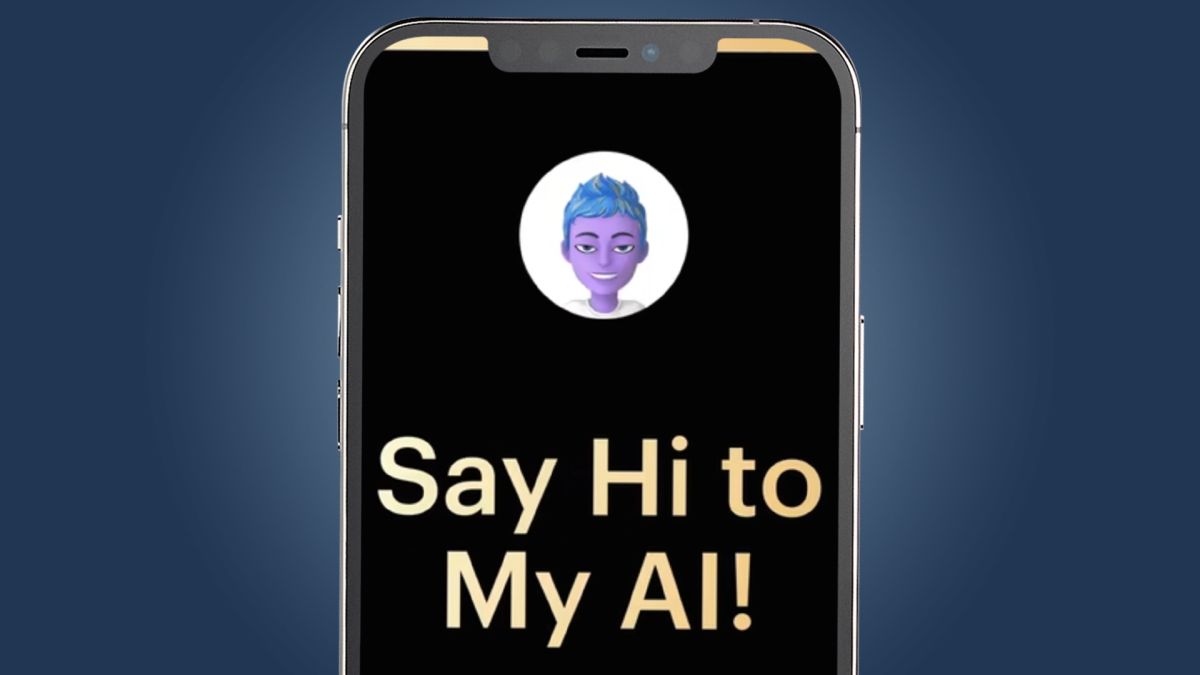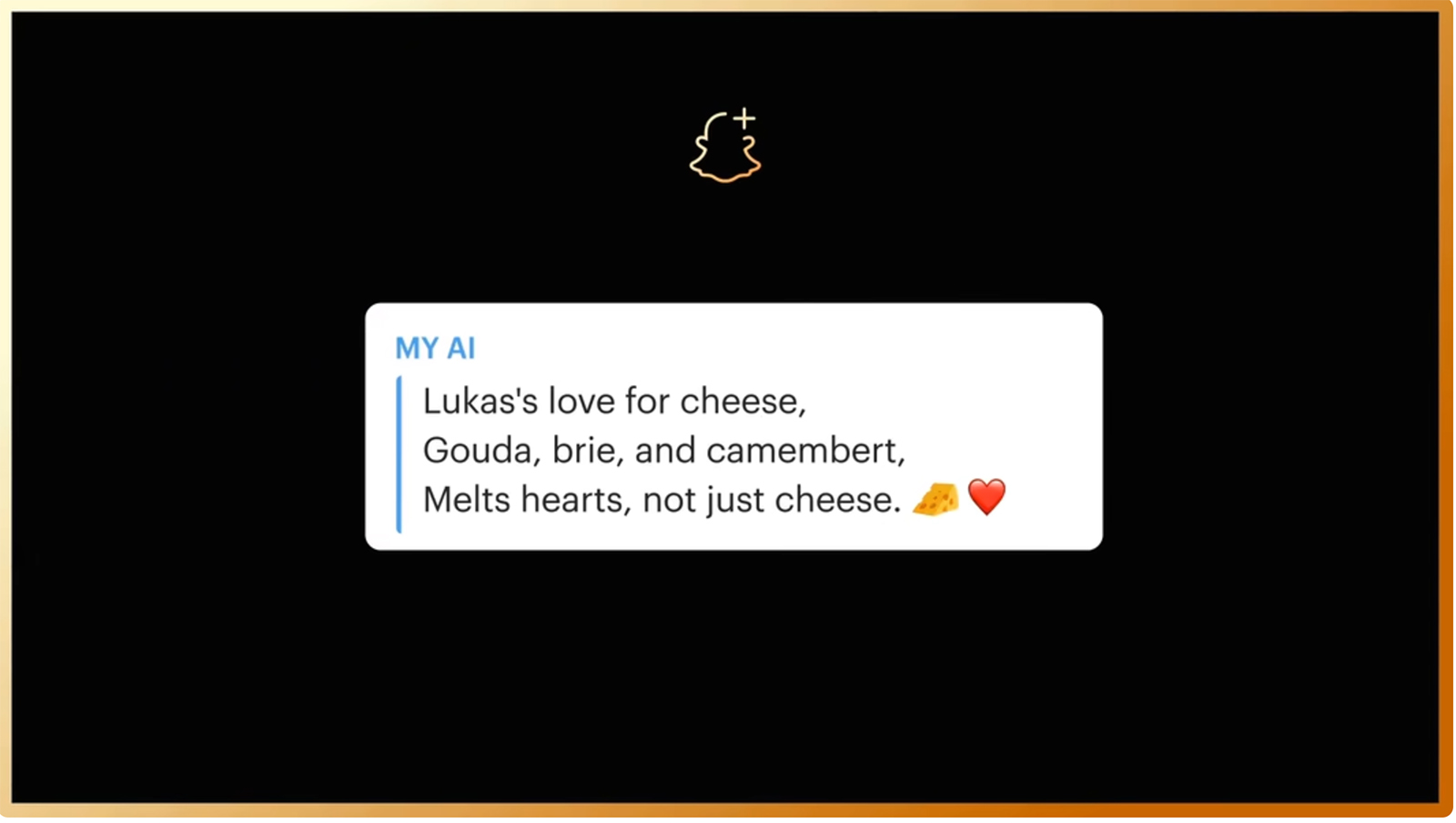
The rise of AI chatbots has been meteoric this yr, however there’s rising proof that they may very well be spreading just a bit too quick. Numerous Snapchat customers are voicing their frustrations concerning the app’s ChatGPT-powered ‘My AI’ assistant.
Earlier this week, Snapchat rolled out its new AI chatbot to all of its world customers, after trialing it on Snapchat Plus subscribers. And it hasn’t precisely been met with common acclaim, in line with stories monitoring the app’s rankings on the App Retailer.
As noticed by TechCrunch (opens in new tab), information from analysts at Sensor Tower (opens in new tab) revealed that, over the previous week, Snapchat’s common U.S App Retailer evaluation was only one.67 stars, with three-quarters of these critiques being one star. The explanation? Additional information from Apptopia (opens in new tab) exhibits that ‘AI’ has been the most typical key phrase in Snapchat’s App Retailer critiques in the course of the interval.
Each of those stories present that Snapchat has obtained far decrease rankings, and 3 times as many one-star critiques, as common when in comparison with a median week. And that feeling can also be mirrored on social media like Twitter, the place the responses to Snapchat’s announcement of the decision (opens in new tab) are decidedly sad.
So why precisely has the broader rollout of a brand new AI chatbot been so controversial? The issue appears to be much less the expertise and extra its implementation. The ‘My AI’ chatbot sits on the high of your Snapchat feed and, except you are a Snapchat Plus subscriber, it may’t at present be moved or unpinned.
If you’re a Snapchat Plus subscriber, it is easy sufficient to unpin ‘My AI’ by going to your Chat Feed, urgent and holding the ‘My AI’ particular person, tapping on Chat Settings, and hitting ‘Clear from Chat Feed’. However the incapability to do that when you do not pay for the app is a typical reason behind the indignant feedback seen on Twitter and in app shops.
Some complaints additionally specific comprehensible unease with Snapchat’s ‘My AI’ professing to not know a person’s location, earlier than then serving to them discover close by eating places. Snap responded with a blog post about location sharing (opens in new tab) yesterday, confirming that ‘My AI’ would not “acquire any new location info” that you have not already agreed to.
The put up underlines that its ‘My AI’ chatbot “solely has entry to a Snapchatter’s location in the event that they’ve already granted permissions to Snapchat”. However this characteristic of the ChatGPT-powered assistant, which relies on the older GPT-3.5 mannequin relatively than GPT-4, can be extra palatable if the chatbot itself was opt-in, relatively than a default possibility for all customers.
We requested Snapchat if it plans to make any adjustments to the app in response to the criticism, particularly letting non-paying customers take away the AI chatbot. A spokesperson informed us: “As we’ve been rolling out My AI, the overwhelming majority of individuals with early entry have been having fun with taking part in with it.” However Snap additionally added that “as with all AI powered chatbots, My AI is all the time studying and we’ve appreciated all of the suggestions so removed from our passionate neighborhood, as we proceed to enhance the expertise.”
It would not appear like the power to unpin the brand new ‘My AI’ chatbot will probably be rolling out for non-paying customers very quickly both, with Snap stating that customers do not should work together with My AI in the event that they’d favor to not. Which signifies that Snapchat’s ‘My AI’ rollout may proceed to be one in every of many AI backlashes we see this yr, as AI chatbots turn out to be an nearly obligatory characteristic for all apps.
Evaluation: AI is not all the time the reply

The rise of AI raises a lot of broader questions – like its potential to destroy human creativity – however alongside these is an equally vital one for the tech giants. Is that this one of the best factor for our customers, and do they actually need it as a obligatory characteristic?
This Snapchat furore exhibits that AI’s potential, and the must be a ‘first mover’, can generally blind to corporations to the fact that not everyone seems to be as enthusiastic about AI chatbots as they’re, notably if the tech has entry to private information. And Snapchat can also be removed from the one instance – Discord additionally not too long ago needed to backtrack on its reworded privateness coverage after the introduction of a number of AI options.
Rolling out ChatGPT-style expertise to our favourite apps is proving to be as troublesome as creating usable AI within the first place. That is one thing Google has additionally wrestled with – after deciding to reluctantly launch its Google Bard chatbot after the success of ChatGPT, the tech large downplayed its potential by calling it a “souped-up Civic” in comparison with its rivals’ supercars.
The lesson from all of this appears to be that, regardless of its unimaginable potential, AI-powered chatbots and options ought to nonetheless be thought of ‘nice-to-haves’ relatively than must-haves. Whereas we are able to anticipate to see AI options turn out to be an vital a part of nearly each app we use this yr, they must be rolled out slowly with human-style sensitivity and warning.
